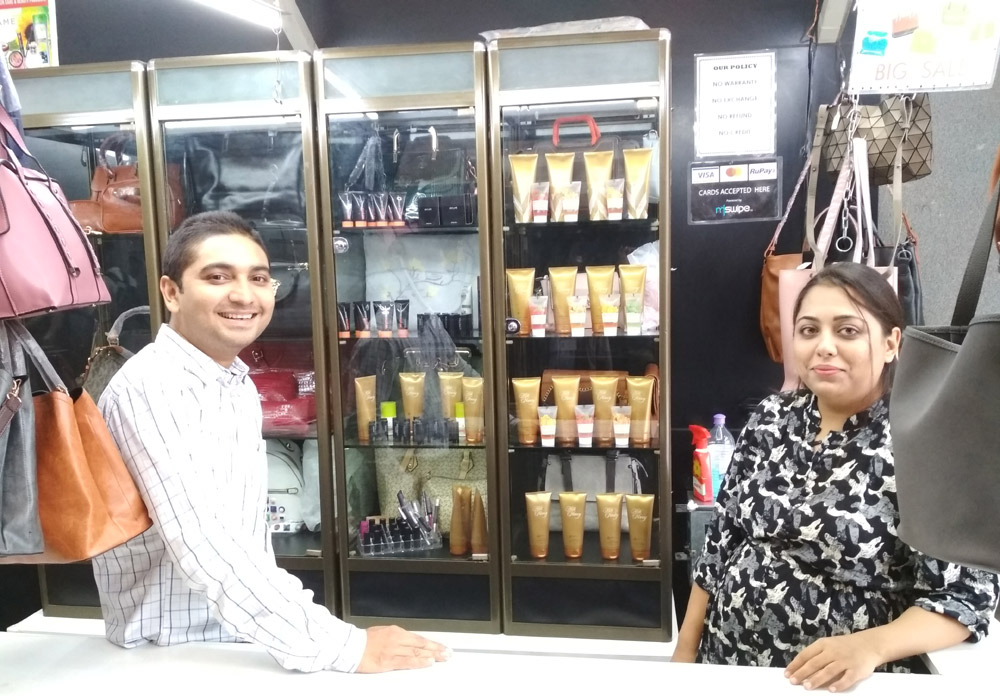From the late 1970s and early 1980s, the beauty, cosmetics and personal care industry has been witnessing a huge growth in India. Will this growth continue? What are the key trends? A report.
Growth and unrelenting growth, has been the long-standing theme of India’s cosmetics and personal care sector. This vibrant industry has been experiencing an explosive rise in sales volumes over the past three decades or so. Nearly every segment in the sector has expanded during this period. The boom can be observed in both business models—Indian manufactures focusing on the domestic market as well as those targeting the overseas clients. Some cosmetics players have even been fortunate enough to register an impressive, 100 per cent growth for several years.
The market structure
India’s cosmetics and personal care industry can be classified into multiple categories. While skin care and hair care constitute the two biggest segments, the other prominent areas are lip care, eye care, oral care, color cosmetics, grooming products, and fragrances. The types of products by form include aerosols, creams, gels, lotions, ointments, powders, razors, sticks, solutions, suspensions, and tablets.
Cosmetics products follow the standard, distributor–dealer chain like many other sectors. The common sales channels are beauty salons, chemists and druggists, departmental stores, direct sales, speciality stores, and supermarkets. During the past few years, e-commerce too has emerged as a formidable contender for selling cosmetic goods in India.
A sustained high growth
Although India’s beauty, cosmetics and personal care industry has been recording a massive growth for a fairly long time, its growth potential is far from being exploited fully. According to a study carried out by Assocham and MRSSIndia , the beauty cosmetics and grooming market in India is forecast to touch $35 billion by 2035. The market stood at about $6.5 billion last year.

The study shows that the cosmetics consumption by teenagers sky-rocketed from 2005 to 2017 due to the rising awareness and the desire to look good. More than 68 per cent of young adults feels that using grooming products boost their confidence. Also, while 62 per cent of young consumers in big cities prefer buying online, about 45 per cent tend to buy cosmetics from shops of their convenience rather than a particular outlet, according to the market research report .
Stating that the rising consumer aspirations is the key demand driver for cosmetic products in India, Murli Narayan, Proprietor, Cosmic International, observes: “Everybody in the society has a strong desire to feel good and look good. There has been a growing awareness about self-grooming. People also want to be seen with good-looking people. It provides them with a sense of self-esteem and respect in the eyes of others.” Cosmic International is an India-based export marketing company.
A global phenomenon
Interestingly, the growth in cosmetics and personal care industry has happened despite the recessionary pressures felt by all the leading economies of the world. The USA, for instance, can be an apt example. Even though the country’s economy suffered from a prolonged slowdown and while many sectors are still coming out of it gradually, the cosmetics industry has been posting a healthy growth. In the U.S, the growing Hispanic population is said to be fuelling demand for luxurious personal care brands. The demand will further grow in the near future, according to a report by Zion Market Research .
Even India is one of the fastest growing markets for cosmetics, globally, this trend cannot be said to be unique for India. Nearly every prominent market in the world has been showcasing a noticeable rise in sales. According to the report by Zion , the worldwide cosmetic products market will touch $500 billion by 2020 and about $863 billion by 2024. Asia Pacific region is considered to be the global industry’s powerhouse, accounting for its major share. Increasing demand in the region is attributed to its burgeoning population, the report concludes.
A few prominent trends
While gigantic growth has been the defining theme of the sector, various trends and undercurrents can also be observed in this market slice. Some of the prominent ones include rising adoption of herbal and natural products by consumers, the emergence of online as a major sales channel for brands, issues related to taxation laws, and the menace of counterfeit products, to name a few. Let’s examine each of these trends in little more in detail.
The Honerable trio: Herbal, Organic, and Natural
The growth of the cosmetics industry goes hand in hand with a gradual but certain growth in demand for herbal products. It was in 1971 that the celebrity beautician Shahnaz Husain started popularising the concept of herbal beauty products. Her ideas of cruelty-free, environment-friendly herbal beauty cosmetics were instantly lapped up by the Indian consumers. Over the last few decades, there has been a steady rise in popularity of herbal ingredients for cosmetics.
In the recent past, with the push by Yoga Guru Baba Ramdev and spiritual Guru Sri Sri Ravi Shankar, consumers are giving a preference to buying cosmetics and personal care products that use herbal ingredients. The herbal beauty segment is currently dominated by Baba Ramdev’s Patanjali Ayurved which sells products worth ₹ 10,000 crore every year. The success of Patanjali, amongst other factors, can also be traced back to the ground prepared by the legendary social reformer Lt. Rajiv Dixit, who through his lectures and live demonstrations educated the masses to refrain from buying products that used chemical ingredients.
With the demand for herbal ingredients gaining strength, the retail giant, Future Group is planning to acquire the Ayurvedic cosmetic brand, Iraya to enter this segment. Promoted by Athena Life Sciences, two of the popular products Iraya promotes include Hair for Sure and D’Free. As per a study by Coherent Market Insights, the herbal beauty products market stood at $91.99 billion (₹ 6.26 lakh crore, approximately) in 2016, and is likely to reach $136.22 billion in 2025 (₹ 9.37 lakh crore, approximately), growing by 4.71 per cent annually. The Asia Pacific, considered as the dominant region, was valued at $32.56 billion (₹ 2.21 lakh crore, approximately) in 2016. In India, the herbal beauty products is already a $2-billion market, growing at a whopping 20 per cent.

Various factors can be considered as the key reasons behind this trend towards herbal cosmetics. Some of these include low or no side effects, growing belief about the long-term benefits of herbal, changing lifestyles, rising assertiveness of the middle-class buyer, and the increasing disposable incomes of households.
Commenting on this scenario, Rishabh Kothari, Vice President, Fragrance & Flavour Association of India (FAFAI), says: “Today’s consumer has multiple choices. The concept of brand loyalty has nearly disappeared. Consumers do not want to stick to any particular brand, but rather, want to experiment. The current trend is towards more ecologically sustainable, herbal and organically created ingredients.”
The rise of online sales
The Indian e-commerce sector has been growing at a stupendous pace. According to data published by IBEF.org , the sector will emerge as the world’s second largest e-commerce market by 2034, overtaking the US market. Even as the general purpose e-commerce players such as eBay, Amazon, Flipkart, and SnapDeal have popularised the concept of online shopping in India, a new breed of online retailers specialising in cosmetics sale has emerged.
These special-purpose e-commerce portals that focus on cosmetics, beauty and personal care products, target the working class professionals, especially young women. Some of the cosmetics-focused websites popular in India are FeelUnique , GloBox , JoyByNature , NaturalMantra , NewU , Nykaa , Purplle , ShopMissa , and TheSkinStore . These sites have already made a name for themselves and built a strong, online consumer-base. These speciality e-commerce players have also brought myriad international labels to India such as Bare Essentials, Bobbi Brown, Clinique, Estée Lauder, Gravitale, Jaquline, MAC, Moda, NYX, Spice Island, and Vipera, to name a few.
According to a study conducted by Google and Bain & Co. , the internet will influence $11 billion of beauty and hygiene sales in India by 2020. Nearly 40 per cent of all online users in India, i.e. 250 million, will shop online by then, the report mentions.

Many traders today complain about the adverse impact of online commerce on brick and mortar retail. In early July 2018, the apex trade body, Confederation of All India Traders (CAIT) even staged a nation-wide dharna demanding blockage of Walmart – Flipkart deal. However, there also exist a few cosmetics players who think otherwise. Presenting a contrarian viewpoint, Imran Lucknowi, Proprietor, SL Lifestyle-Handbags and Skin Care says: “Retailers who can provide a personalised service to their walk-in customers do not have to worry about competition from online.” A good retailer, he says, “does not only sell cosmetics. His commitment to customers should go deeper. Stocking high-value brands that are rarely available and walking the extra mile to help customers solve their problems may go a long way in spelling success for cosmetics retail.” Imran and his wife Safiya own and operate a retail showroom in Pune that specialises in selling cosmetics and fashion handbags.
A few hassles remain
Even as the Indian cosmetics industry has been witnessing one of its best times, a few issues continue to perturb the players today. India completed one year of GST implementation on July 1, this year. Recently, the government reduced the GST rates on various cosmetic products and also simplified the filing procedures to a certain extent. Commenting on GST regime, Ms Kajal Anand, managing director, Debon Herbals, says that although GST has brought in several profound advantages, a lot remains to be achieved. “Subsuming 27 taxes and 26 cesses by working with central and state governments has been a remarkable accomplishment. The availability of input tax credit (ITC) is another positive of the GST regime. However, businesses continue to face a few operational and procedural hassles even today.”
The government, she says, needs to fulfil the demands of traders pertaining to refund process, relief against the compulsory HSN code inclusion rule, and computerization subsidy for small traders to encourage GST compliance. Ms Kajal is the Immediate Past President of All India Cosmetic Manufacturers Association (AICMA) and Head of Women’s Wing for Maharashtra State of Confederation of All India Traders (CAIT) .
Stating that reducing tax rates is a welcome move, Murli Narayan of Cosmic International opines: “The rate reduction is good not only for cosmetics but for other industries too. It will surely boost sales.”
Counterfeits and parallel imports
The spread of counterfeit products and parallel imports have been two other issues faced by the cosmetic industry today. Most beauty products come in small 20 ml (or lower) packs. As the consignment sizes are small, huge quantities can easily be shipped to India from China and other regions. The local importers list these fake products on e-commerce platforms. Consumers fall for these due to the steep discount they offer over the original brands. This year, Hindustan Unilever Ltd (HUL) lodged nearly 30 police cases complaining about companies using an identical logo, trademark and product descriptions on their packaging. Similar actions are being taken by major brands like Estée Lauder and Kylie Cosmetics.
Parallel import is another issue wherein duty-paid products of global brands enter India and are sold in huge quantities due to their price difference between developed markets and India. While parallel imports cannot be termed as illegal trade, it hurts the business of brands and their authorized channels in India. Brand owners as well as trade bodies therefore often demand imposition of anti-dumping duties on such goods.
Commenting on this issue, Rishabh Kothari of FAFAI says: “We had observed a while ago that some Chinese ingredients were being dumped in India. Being a responsible association, we felt the need to intervene. So on behalf of the industry, we made a demand to introduce anti-dumping duty as part of the regulatory policies for the said ingredients.”
While these challenges exist, the dream run of beauty, cosmetics, and personal care industry continues. If the government pays attention to simplified tax procedures but a strict imposition of licensing policies, it will provide a tremendous boost to the business in India.

